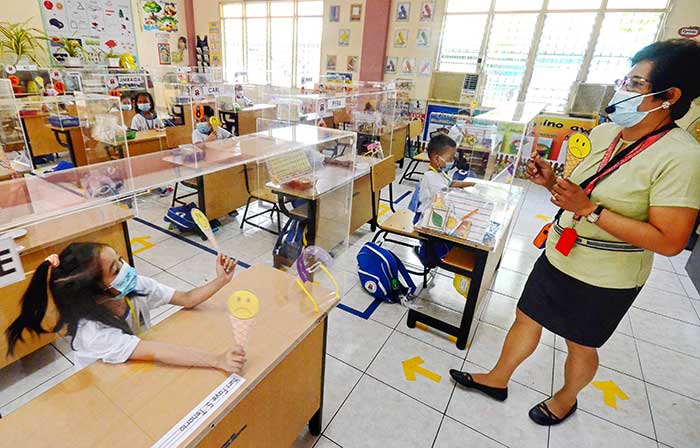TROPICAL storm “Odette,” (international name Rai), will intensify into a typhoon as it nears the Philippine area of responsibility and is expected to slam into the vicinity of Caraga or Eastern Visayas by Thursday, according to the Philippine Atmospheric, Geophysical, and Astronomical Services Administration.
Weather forecaster Sheila Reyes said that as of 4 p.m. yesterday, Odette was 1,000 kilometers east of Mindanao, gradually intensifying its strength.
Reyes said it is expected to move westward over the Philippine Sea today, Wednesday, adding that typhoon signals are likely to be raised over the Visayas, large portions of Mindanao, and several areas in Southern Luzon.
President Duterte on Monday night directed local government units (LGUs) and government agencies to take necessary preparations in anticipation of the onslaught of Odette while Interior Secretary Eduardo Año reminded executives of areas within the path of the storm to be present in their respective jurisdictions before, during, and after the calamity.
Cabinet Secretary Karlo Nograles said the Department of Social Welfare and Development has readied some P951 million worth of family food packs and relief goods and standby funds.
“This tropical cyclone is forecast to reach typhoon category on Wednesday,” Reyes said, adding Odette may reach peak winds of around 155 kilometers per hour by Thursday morning or afternoon.
She said that in the next 24 hours, Odette will bring light to moderate with at times heavy rains over Caraga and Davao Oriental.
Reyes said that sea travel is risky for all types of seacrafts over the seaboards of Southern Luzon and Visayas, and the northern, eastern, and western seaboards of Mindanao.
Over 10,000 barangays in Mindanao, the Visayas and southern Luzon are at risk of flooding and landslides due to Odette, according to the National Disaster Risk Reduction and Management Council
Mark Timbal, NDRRMC spokesman, said residents in these areas may be evacuated if local officials see there is “imminent threat.”
“The MGB (Mines and Geosciences Bureau) reported that more than 10,000 barangays are flood prone, landslide prone and should have started preparations as early as over the weekend to ensure the safety of our countrymen,” said Timbal.
“The action we took is to remind the regional disaster councils and LGUs (local government units) to monitor and take action, to effect evacuation in these areas especially if the danger is imminent,” said Timbal.
As of yesterday, however, there were still no reports of evacuation in concerned areas.
Timbal said the NDRRMC has taken preparations against the weather disturbance, including the prepositioning of food packs for people who will be affected.
“On the part of the national disaster council, we have more than P900 million worth of relief items and stockpiles. This is more than enough to sustain our operation to help our countrymen in the communities who will be affected,” said Timbal.
Meanwhile, the Philippine Coast Guard said some 1,066 passengers and 456 rolling cargoes have been stranded at the port of Matnog in Sorsogon as of yesterday afternoon.
PCG Commandant Adm. Leopoldo Laroya ordered PCG units to prepare for possible evacuation and search and rescue operations in areas that will be affected by the storm. — With Jocelyn Montemayor and Victor Reyes


